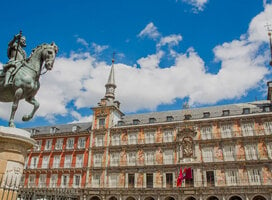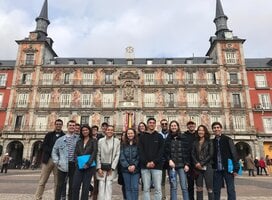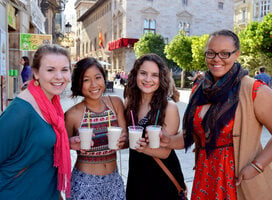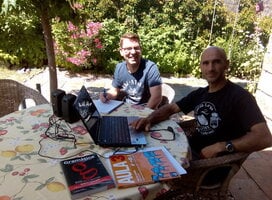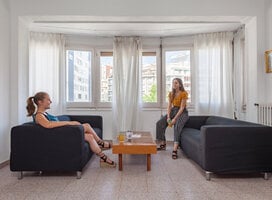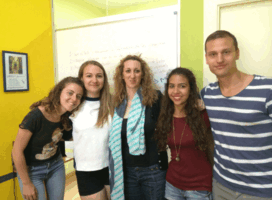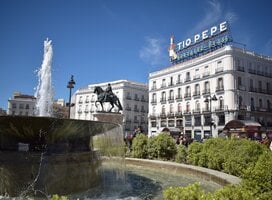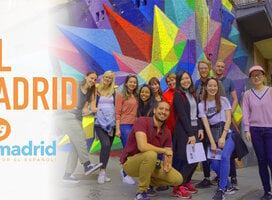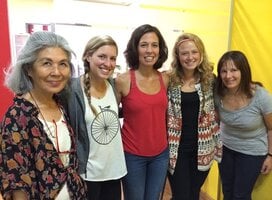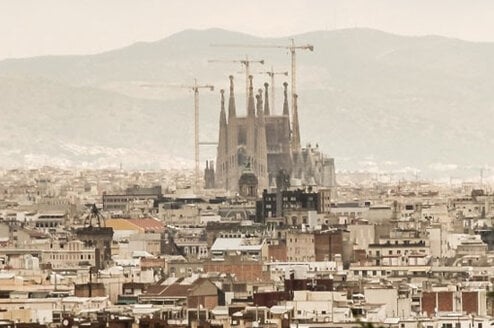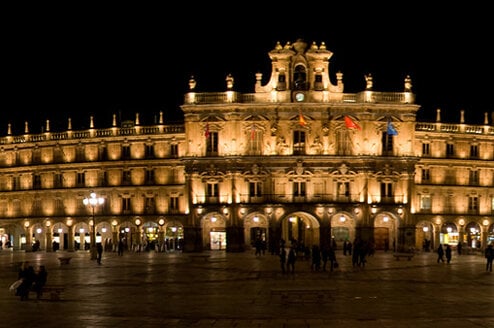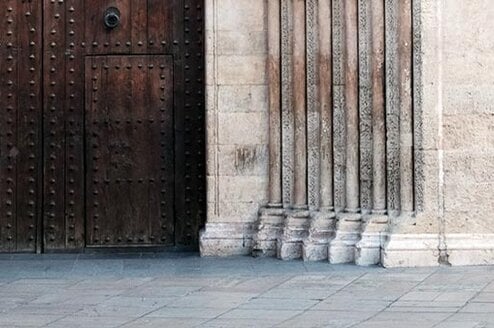Study Abroad Programs in Madrid
Madrid is one of those cities that is easy to fall in love with. An affair begins with the Spanish capital at the first glance of the Palacio Real, with the first bite of traditional Jamón, with the first stroll in El Parque del Retiro, or with your first experience at one of the many festivals exclusive to Madrileños, such as “La Noche en Blanco.” The history waiting to be discovered, the culture waiting to be lived, and the friendly Spanish people who are so eager to assist with learning the Spanish language are some of the many components that make Madrid an alluring destination for a student to live.
Puerta del Sol
Puerta del Sol is a wonderful starting place. Recognizable by its two large fountains, and located centrally in Madrid, this famous plaza is the center of the radial network of Spanish roads, and was originally one of the gates to Madrid in the 15th century. Today, Sol is the ultimate meeting place for groups of friends trying to coordinate their Friday night. It is the equivalent of New York City’s Time Square - a bustling plaza full of street performers, club promoters and tourists taking pictures of the famous new year’s eve clock above Casa de Correos.
Plaza Mayor
Plaza Mayor, known for its historical background, seasonal markets and outdoor dining, is a five-minute walk away from Sol. The symmetrical architecture, if looked at closely, features brilliant fresco paintings on select exterior walls. The large square is an excellent location for people watching and to grab a bite to eat at one of the many restaurants with outdoor seating. El Restaurante Botín, the world’s oldest restaurant, is just down the street from Plaza Mayor, and features suckling pig among other traditional Spanish cuisine.
El Palacio Real de Madrid
El Palacio Real de Madrid is a priority attraction for anyone living in or visiting the Madrid area. Deemed the largest palace in Europe with over 3,000 rooms and over a million square feet, Palacio Real is well worth the extra euro or two to listen to the history via headset and walk the grand rooms with fresco painted ceilings. There is free entry on Wednesdays.
Gran Via
Gran Via is a large street full of shops and tourists during the day, but by night students may want to stay away as prostitutes typically line the streets. Window shopping down Gran Via, and then ending with a coffee in front of the monument to Miguel de Cervantes in La Plaza de España is a great way to spend an afternoon.
Mercado de San Miguel
Mercado de San Miguel is near Plaza Mayor, and is a market enclosed by glass that features fresh produce and seafood, fresh cheeses and Spanish wine, sweets and pastries and a lively atmosphere that allows visitors to drift from vendor to vendor sampling delicious bites while holding a glass of wine. Be sure to try the sushi – which is made fresh and for one euro per piece, is a great way to try new flavors and combinations.
Museo del Prado
Museo del Prado is free 6 – 8pm Monday through Saturday. While two hours is not enough time to see the many works of Velazquez, Goya and other notables in the large gallery, fortunately visitors may return any evening of the week! Be sure to stop by the artists painting Spanish posters with tourists’ names for 6 euro outside of the entrance – they are beautiful and an excellent, affordable souvenir.
Explore the following scholarships:
- API offers a variety of scholarships for those participating in their programs - including a few great options in Spain!
- CC-CS scholarship fund offers multiple scholarships, celebrating diversity or rewarding academic excellence for alumni and program participants.
- ISA sponsors the Dr. Carlos Castañeda Memorial Scholarships for students participating in an ISA program in a Spanish-speaking country.
- More Study Abroad Grants and Scholarships
Study Abroad Programs in Madrid
Pagination
What People Are Saying
Related Study Abroad Articles
Frequently Asked Questions
-
Is it expensive to live in Spain?
While larger cities like Madrid and Barcelona can be on the more expensive side, the cost of living in Spain is lower than in most European countries. A room in a shared apartment in a city center like Madrid can range from about €350-€600 ($390 - $672 USD).
-
Is it safe to live in Spain?
Spain is a very safe country. But, just like the rest of Europe, Spain is notorious for pickpockets. It's important to not carry your passport around and always keep an eye on your phone!
-
How long does it take to get a Spain student visa?
Processing your visa application takes the consulate about 4 weeks. The most lengthy part of the process is collecting all of the documents and securing an appointment. For some consulates it is very difficult to secure an appointment, so it is best to plan ahead.
The documents needed to apply for a student visa are:
- National visa application form + photocopy
- Original passport + photocopy
- One recent passport sized photo (to be attached to the form)
- Copy of the acceptance letter from the Spanish University (in Spanish or with Spanish translation)
- Evidence of funds (could be a statement from the University describing housing or a notarized letter from your parents assuming financial responsibility)
- Proof of health insurance
- Medical certificate (only need for stays longer than 180 days)
- Express mail envelope with pre-paid stamps addressed to yourself with which the consulate may return your passport with the visa
Related Content -
Can international students stay in Spain after graduation?
Students studying in Spain who hold an EU passport will have a relatively simple time obtaining a work permit in order to stay in Spain. For students from other countries, the process is a bit more complicated. Before you can apply for the work visa, you would need to find a job that will hire you and can show the government that there were no suitable local candidates for that position. They can then sponsor you for a work and residence permit, after which point you can apply for a work visa.
-
How much does it cost to study in Spain?
Spain has 76 universities, and prices vary considerably depending on the institution and whether it's public or private. The average cost of studying abroad in Spain through a third-party provider is around $11,000 for a semester. Prices can be considerably lower if you are prepared to enroll directly at a Spanish university. Public universities can cost as little as $1,000 and private institutions can cost $7,000 and up.
Related Content -
Can I work in Spain with a student visa?
On a student visa, you can work up to 20 hours in Spain with a work authorization requested by the company you'd like to work for. The company will have to request this authorization from the Oficina de Extranjería (Foreigner's Office). It can take from 3 weeks to 3 months to process your application depending on the province, so it's best to apply as early as possible!
Related Content



